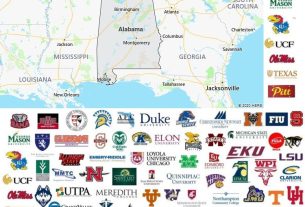Attractions
San Pedro Sula
San Pedro Sula is the north coast’s largest industrial and commercial center (bananas and sugar) with a new airport, excellent hotels, attractive shopping and several good restaurants. Nearby is Cusuco National Park.
Islas de la Bahia
Located 50 km off the Caribbean coast, this exotic group of islands is made up of three larger islands – Roatán, Guanaja and Utila – and many smaller islands ( cays ). The history of this archipelago can be traced back from the British colonial empire through the Spanish privateers to the Mayas. The mountainous, lush islands of Roatán and Guanaja are protected by a large coral reef that is a true divers’ paradise. Utila has long sandy beaches and is surrounded by lots of small, palm-covered cays.
- Searchforpublicschools: Offers schooling information of Honduras in each level – compulsory, technical and higher education programs.
Copan
The pretty village of Copan is 171 km from San Pedro Sula. The impressive ruins in the Copán Archaeological Park bear witness to the fascinating Mayan culture. The courtyard and temple buildings, the large ball court, a huge amphitheater and the hieroglyphic staircase are particularly impressive. Great finds have been made in the great Acropolis, which are on display in the Copán Sculpture Museum. The dwellings of the Maya, which were also uncovered, provide information about their everyday life for the first time.
Trujillo
Trujillo was once a busy port and colonial capital of Honduras. The mysterious pirate past, tropical dream beaches and old Spanish colonial buildings make up the charm of this beautiful city. New holiday areas are currently being developed in this area.
The Caribbean Coast
La Ceiba, at the foot of Pico Bonito (1500 m), is still an important transshipment point for bananas. People like to celebrate in this port city and not only during the carnival. The jungle of the Pico Bonito offers habitat for a species-rich animal world and can be explored on expeditions as well as the fascinating flora.
Tegucigalpa and Comayagua
The state capital Tegucigalpa was founded in 1524 as a mining settlement. The beautiful city parks, especially Concordia (interesting models of the Mayan buildings of Copan) and the UN Park, which offers a wonderful view over the city, invite to long walks. Not far from Tegucigalpa there is the La Tigra National Park to visit with its impressive cloud forest. About 80 km from Tegucigalpa is Comayagua, the former state capital. Here you feel transported back to the colonial times: cobblestone streets, small squares and white ones Houses make up the charm of this city as well as the cathedral and the many churches. 34 km from Tegucigalpa is the world-famous Escuela Agrícola Panamericana – the agricultural institute has students from all over the world.
Shopping
Overview
The local handicrafts are very beautiful and also inexpensive. Popular souvenirs include wood carvings, cigars, leather goods, straw hats, jewelry made from glass beads, seeds and dried legumes, bags and baskets. Shop opening times: i. A. Mon-Fri 08.00-12.00 and 13.30-18.00, Sat 08.00-17.00.
Nightlife
Introduction
There are cinemas and discos in the larger cities.
Culinary
Overview
Specialties include curiles (seafood), tortillas, frijoles, enchiladas, tamales de elote (corn tamales), nacatamales, tapado, yuca con chicharron, and mondongo. Typical fruits are avocados, mangoes, papayas, pineapples and bananas.
Culture
Religion
Predominantly Roman Catholic (97%), minorities of Anglican, Baha’i and Baptist.
Social Rules of Conduct
The Spanish influence is everywhere; the majority of the population are mestizos who are mainly employed in agriculture and have a low standard of living. The traditional lifestyle has been preserved in many villages. The usual forms of politeness should be observed. If invited to a private home, it is a nice gesture to send the hostess a bouquet of flowers (before or after the visit). Restrained everyday clothing is accepted everywhere, but is usually a little more casual in the coastal areas. Swimwear and shorts should only be worn at the pool or beach. Men should pack a tuxedo. Tipping: 10-15%, usually included in the bill in restaurants.
Climate
Best travel time
Temperatures depending on altitude. Hot on the north coast, precipitation all year round. In the south (Pacific coast) warm, humid tropical climate with a pronounced dry season. At high altitudes (600-1800 m) moderate climate, average temperatures: 16-20°C. Dry season November – April, rainy season May – October. Tropical storms (cyclones) must be expected in the period from June to September.
Country data
Phone prefix
+504
Area (sq km)
112090
Population
9,904,607 (Source: homosociety)
Population density (per square km)
78
Population statistics year
2020
Main emergency number
195



